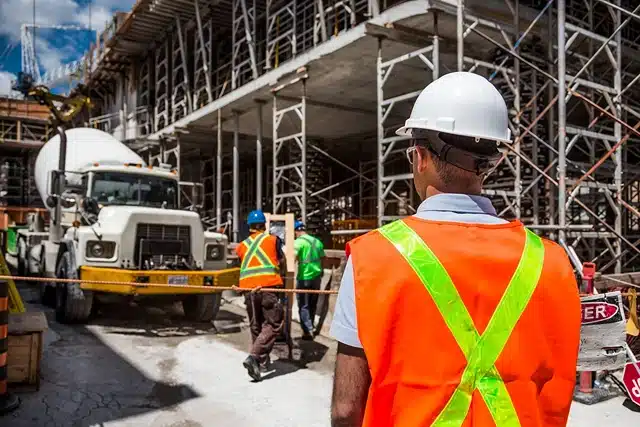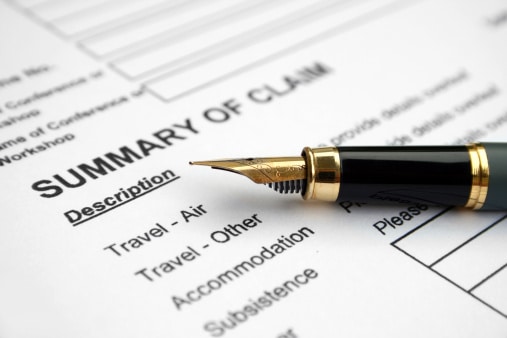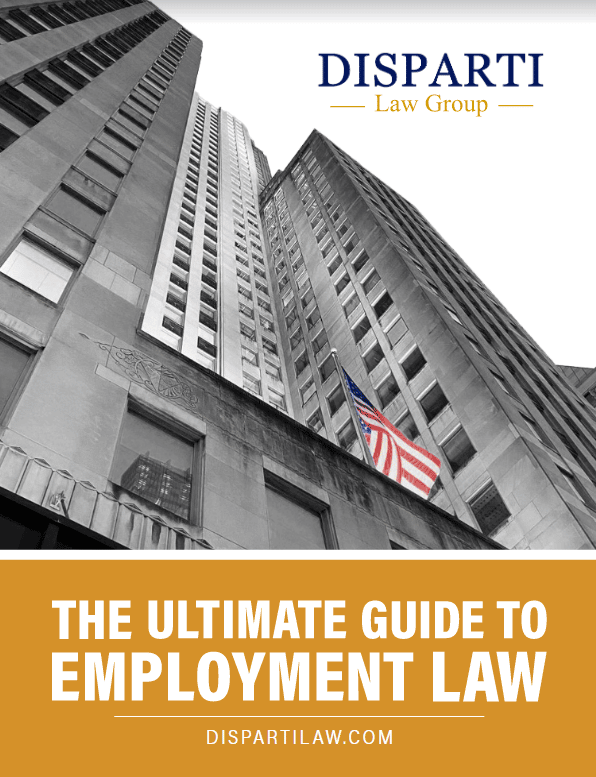Scaffolds are inevitable in a city like Chicago. This important tool allows construction workers to build and maintain tall buildings and structures. As important as they are, using scaffolding in a project can result in accidents causing injuries not only for construction workers but also any other passerby.
In this article, we discuss the 12 main causes of scaffolding accidents that result in death or injury. Injured victims of scaffolding accidents should know may be entitled to compensation for their suffering. A personal injury attorney at Disparti Law Group Accident & Injury Lawyers can help.

In This Article:
- Main Causes of Deaths and Injuries on Scaffolds
- 1. Negligent Manufacturing
- 2. Unsafe Scaffold Design
- 3. Improperly Secured, Supported, Stabilized, or Fastened Scaffolds
- 4. Malfunctioning Brakes
- 5. Lack of Overhead Protection
- 6. Lack of Guardrails
- 7. Defective Pulleys
- 8. Defective Fall Safety Systems
- 9. Overloaded Scaffolding
- 10. Improper Scaffold Maintenance
- 11. Bent, Damaged, or Otherwise Compromised Scaffolds
- 12.Violations of the Occupational Safety and Health Administration (OSHA) guidelines
- File a Workers’ Compensation Claim
- Contact a Personal Injury Lawyer at Disparti Law Group
Main Causes of Deaths and Injuries on Scaffolds
Many of these causes come down to negligence by a construction job site supervisor, employer, manufacturer, or construction staff. Studies show that the biggest potential threat on a construction site is scaffoldings. Each year a significant number of construction site fatalities are due to falls from scaffoldings. To protect its employees, employers must take every safety precaution to protect their workers and prevent scaffolding accidents. A good place to start is by knowing the common causes of scaffolding accidents.
1) Negligent Manufacturing
Scaffolding accidents can be triggered by negligent manufacturing practices, leading to the production of substandard equipment with flaws that compromise worker safety. When scaffolds are constructed using inferior materials or subpar workmanship, they become prone to structural failure, collapse, or unexpected malfunctions. Employers and construction companies must prioritize acquiring scaffolding from reputable manufacturers and conducting thorough quality checks to ensure worker safety.
2) Unsafe Scaffold Design
Poor scaffold design is a significant cause of accidents, where scaffolds may lack essential safety features or be inadequately engineered for the intended loads and environmental conditions. Such deficiencies can result in scaffold collapses or instability, endangering the lives of workers on the platform. It is crucial for designers and engineers to adhere to industry standards and conduct meticulous evaluations to ensure that scaffolds are safe for use.
3) Improperly Secured, Supported, Stabilized, or Fastened Scaffolds
Improper assembly and installation of scaffolds can lead to hazardous situations. When scaffolds are not correctly secured, supported, stabilized, or fastened, they may become unstable during work, increasing the risk of accidents and injuries. Workers should receive comprehensive training in scaffold assembly and follow manufacturer guidelines and safety protocols to maintain stable and secure working platforms.
4) Malfunctioning Brakes
Mobile scaffolds equipped with wheels require functional brakes to prevent unintended movement during use. Malfunctioning brakes can lead to unexpected shifts or collapses, endangering workers on the scaffold. Regular maintenance and inspections of mobile scaffolds, including brake mechanisms, are crucial to avoiding accidents associated with unintended movement.
5) Lack of Overhead Protection
The absence of overhead protection exposes workers on scaffolds to falling objects, a serious hazard on construction sites. Without suitable protective measures such as canopies or netting, workers are at risk of being struck by tools, materials, or debris, potentially causing severe injuries. Employers must implement adequate overhead protection to safeguard workers and prevent accidents caused by falling objects.
6) Lack of Guardrails
Guardrails play a critical role in preventing falls from elevated platforms. When scaffolds lack appropriate guardrails or are improperly installed, workers are at greater risk of accidental falls, leading to injuries or fatalities. Employers should ensure all scaffolding systems have properly designed and securely installed guardrails, while workers should be educated about their importance and use.
7) Defective Pulleys
Scaffolding systems that use pulleys for material hoisting are subject to accidents if the pulleys are defective or malfunctioning. When pulleys fail during lifting operations, loads can drop suddenly, posing significant risks to workers on the scaffold. Employers should prioritize the regular inspection and replacement of faulty pulleys to maintain a safe working environment.
8) Defective Fall Safety Systems
Fall safety systems, such as harnesses and lanyards, are essential for protecting workers from falls when working at heights. If these systems are defective or not adequately maintained, they may fail to arrest a fall or even cause additional injuries. Employers must invest in high-quality fall protection equipment and regularly inspect and replace worn or damaged components to ensure workers’ safety.
9) Overloaded Scaffolding
Exceeding the weight capacity of scaffolds is a dangerous practice that compromises their structural integrity. Overloaded scaffolds are more prone to collapses or failures, endangering workers on the platform and those below. Employers should provide clear guidelines on load limits, and workers must be trained to recognize the signs of overloading to prevent such accidents.
10) Improper Scaffold Maintenance
Regular maintenance of scaffolds is vital to ensure their safe and reliable operation. Neglecting maintenance tasks can lead to issues such as loose components, rusting, or compromised structural integrity. Proper scaffold maintenance practices, including inspections, cleaning, and timely repairs, are essential to minimize the risk of accidents and ensure a safe work environment.
11) Bent, Damaged, or Otherwise Compromised Scaffolds
Scaffolds that have been subjected to impact or misuse may suffer structural damage, leading to compromised stability. Bent, damaged, or otherwise compromised scaffolds can pose serious safety risks, making it crucial for workers to inspect scaffolds before use and promptly report any signs of damage. Proper storage and handling of scaffolds can also help prevent unnecessary wear and tear, ensuring their longevity and safety.
12) Violations of the Occupational Safety and Health Administration (OSHA) Guidelines
Non-compliance with Occupational Safety and Health Administration (OSHA) regulations is a major contributing factor to scaffolding accidents. Failure to adhere to OSHA guidelines on scaffold construction, usage, inspection, and worker training exposes employees to preventable hazards. Employers should prioritize compliance with OSHA regulations, conducting regular safety audits, and providing comprehensive training programs to foster a culture of safety and prevent accidents on construction sites.
File a Workers’ Compensation Claim
If you’re a construction worker involved in a scaffolding accident, you may be eligible to file a workers’ compensation claim to cover your scaffolding injuries. However, navigating these claims can be complex. To ensure you receive the maximum compensation for your injuries, it is advisable to contact a workers’ compensation attorney who can guide you through the process and advocate for your rightful entitlements.
In general, employees are restricted from suing their employers, especially after filing a workers’ compensation claim. However, if you suspect that your accident resulted from your employer’s gross negligence, consulting an attorney can help determine the possibility of pursuing a lawsuit against them. Alternatively, if your accident was caused by another party unrelated to your employer, an experienced construction site lawyer can assist you in seeking justice and compensation.
Contact a Personal Injury Attorney at Disparti Law Group
Scaffolding accidents don’t only affect construction workers; there is a risk of injured pedestrians in scaffolding accidents as well. Employers are responsible for preventing such accidents and protecting anyone near the construction site. If you were injured while passing by a scaffolding, you may consider filing a lawsuit against the at-fault compan. All injury-related expenses would be covered including medical bills, lost wages, and pain and suffering.
At Disparti Law Group Accident & Injury Lawyers, we are committed to helping victims seek justice in the face of negligence. No one should bear the financial burden resulting from such accidents, especially when preventative measures should have been taken to avoid scaffolding mishaps.
For a FREE case review and to discuss your situation with a legal expert, call us today at (312) 600-6000. Discover why so many say… Larry wins!









